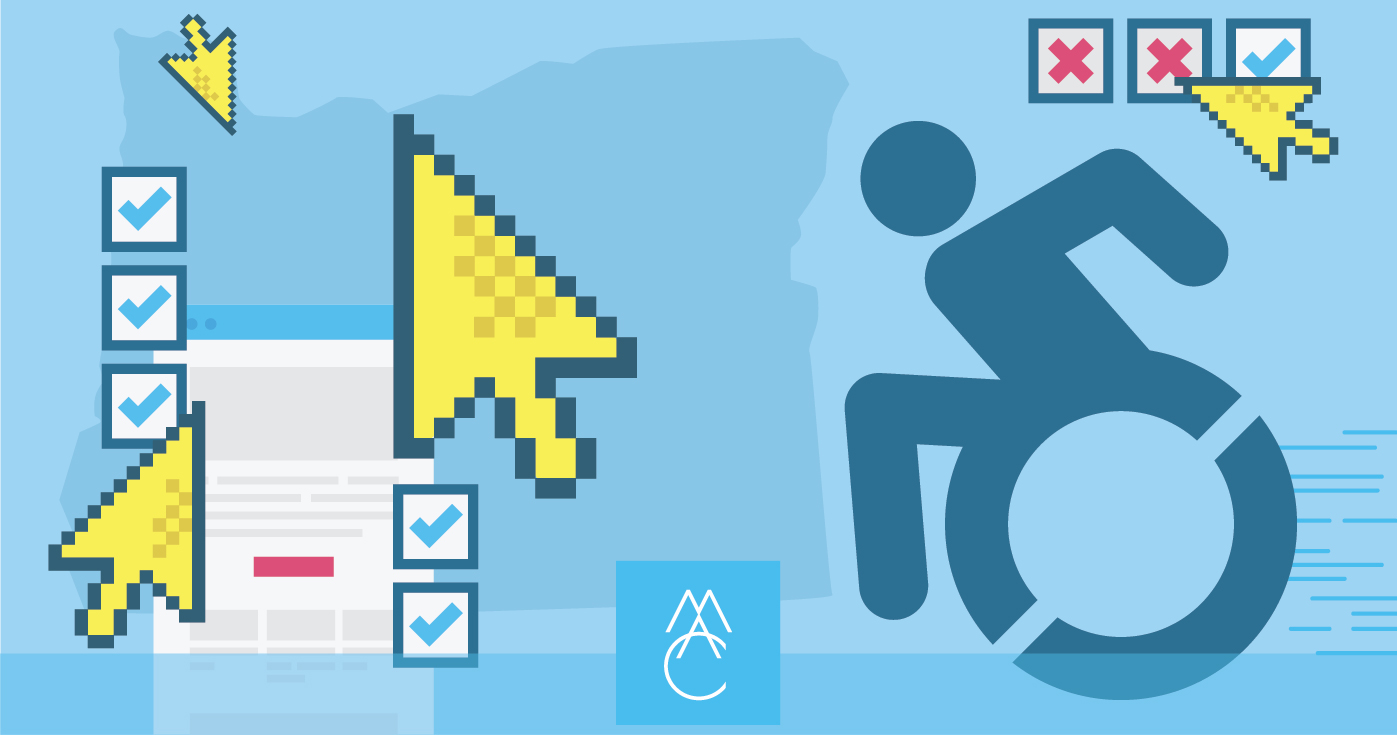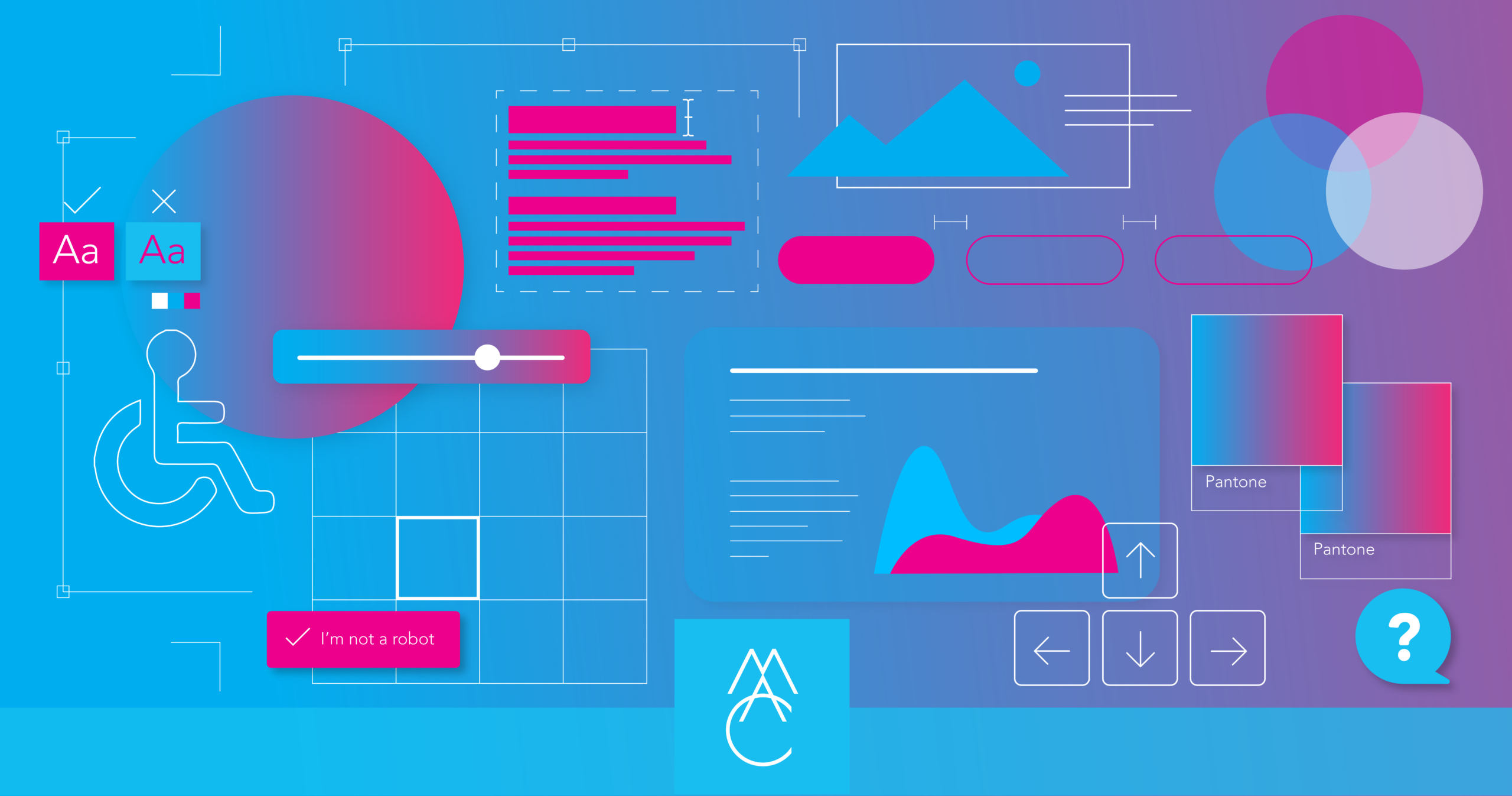
Safeguard Your Investment: the 411 on Accessible Design
How can an organization truly serve the public if they can’t reach the whole public? In the U.S., one in four adults live with some type of disability. These range from mobility issues and cognitive difficulties to hearing, vision, and independent living disabilities.
Accessibility on the internet shouldn’t be an afterthought for your organization, but a fundamental consideration. In fact, if your organization receives federal funding, you are required by law to have an accessible website. That’s where MAC comes in—we draw on deep research, vetted processes, and a track record of success to deliver websites that don’t just look good; but serve the entire public, too.
Section 508 of The Rehabilitation Act, first adopted in 1973 and amended by Congress in 1998, requires federal agencies to make their electronic information accessible to people with disabilities. The rules were originally established in the fairly early days of the Internet, but Section 508 was modernized in 2017 to align with the Web Content Accessibility Guidelines (WCAG) outlined by the World Wide Web Consortium. Whether a federal agency or not, WCAG is now considered industry standard for accessible web design.
A website built according to WCAG will ensure “people with disabilities can perceive, understand, navigate, and interact” with your website without barriers. The guidelines fall within four categories.
- Perceivable. Components of a website must be presentable to users in ways they can understand, despite disabilities. Applications include high contrast designs, text alternatives, and adaptable content.
- Operable. Sites must include keyboard operation, adaptability for timed features, and input varieties. Designs must prevent seizure or physical reactions.
- Understandable. Users should be able to easily understand and use the interface. It must be readable, predictable, and feature input assistance.
- Robust. A wide variety of user agents, including assistive technologies, must be able to interpret the site.
Accessibility at MAC
Madison Ave. Collective (MAC) is one of only two U.S.-based website development agencies to be a member of the International Association of Accessibility Professionals (IAAP). The IAAP exists to “define, promote, improve, and diversify the accessibility profession globally through certification, education, and networking in order to enable the creation of accessible products, content, services, and environments.” Through IAAP membership, our team is able to stay on top of accessibility requirements and gain from information that is shared through webinars and events.
At MAC, accessibility is a must-have for our clients in community health, education, and public services. Through extensive research and experience, we have developed vetted processes to place accessibility at the forefront of our work. From beginning to end — including content, UI design, and development — we’re incorporating accessibility best-practices into our work.
Working in Figma, our UX designers create detailed mockups for both mobile and desktop screens. We follow best practices in usability and accessible interface design that are verified with an accessibility add-on called Stark. We check color contrast, font size, mobile touch target size, and more — all before the files are handed off to our development team.
Then, once the site has been coded and installed on a development site — adhering to modern standards in HTML/CSS and Javascript development — we rely on a number of tools and methods to test accessibility during the QA phase, prior to launch. Our three-pronged approach is as follows:
- Automated site scan using browser-based tools including AccessiBe and WAVE. These quickly identify areas for improvement, expediting the design process.
- Screen reader scan using software such as VoiceOver for macOS to make sure the page will work for visually impaired visitors.
- Manual review using browser magnification to test content reflow, or how browser size and shape impacts the readability of content.
Each approach provides a unique and sometimes nuanced perspective that enables our team to verify that the navigation, text links, maps, forms, etc. are functional and understandable to those relying on assistive technology to browse the website.
MAC in Action
Colorado Community College System (click to view case study) recently hired MAC to develop a comprehensive new website comprising nearly 1,000 pages and three microsites, while expanding its well-established visual identity system to support that goal. Despite its scope and complexity, the organization needed to present itself in an effortlessly comprehensible, fully accessible way.
We approached the project as we would any website, carefully applying our accessibility framework at every stage—from design to development. The final product features content that is rich and engaging, with video, charts, tables, and graphs. The organization is intuitive, verified by user testing. And in full compliance with WCAG standards, the site demonstrates best practices in accessibility.
It’s also important to note that every change made to a website after launch can potentially impact WCAG compliance. As such, we recommend assessing compliance on at least a quarterly basis and take steps to remediate any issues that may have come up since the last assessment. This is a service MAC provides as part of a post-launch maintenance and support agreement for many of our clients.
Just like security, performance, and observability are necessary considerations for any new website build, accessibility should be, too. Designing a website with accessibility features in mind is one of the only ways to safeguard your investment. From beginning to end, MAC focuses on accessibility to deliver safe, accessible websites. We draw on deep research, vetted processes, and a track record of success to get results—delivering websites that don’t just look good; they’re a good investment.
This article is also published on Medium.
More Resources
-

Article
Checklist of Federal and State Requirements for Developing an Accessible Website in OregonUnderstanding accessibility Designing a website that’s “accessible” means you’re providing an equivalent experience for all users, regardless of the physical...
-

Article
WCAG 2.2 Guidelines - What's NewThe Web Content Accessibility Guidelines (WCAG) exist to help web developers and the organizations they serve to be as inclusive...
-

Article
Why Websites Are An Ongoing InvestmentCommunity institutions—whether government agencies, universities, or community health organizations—are encountering a unique set of challenges and expectations with their web...



